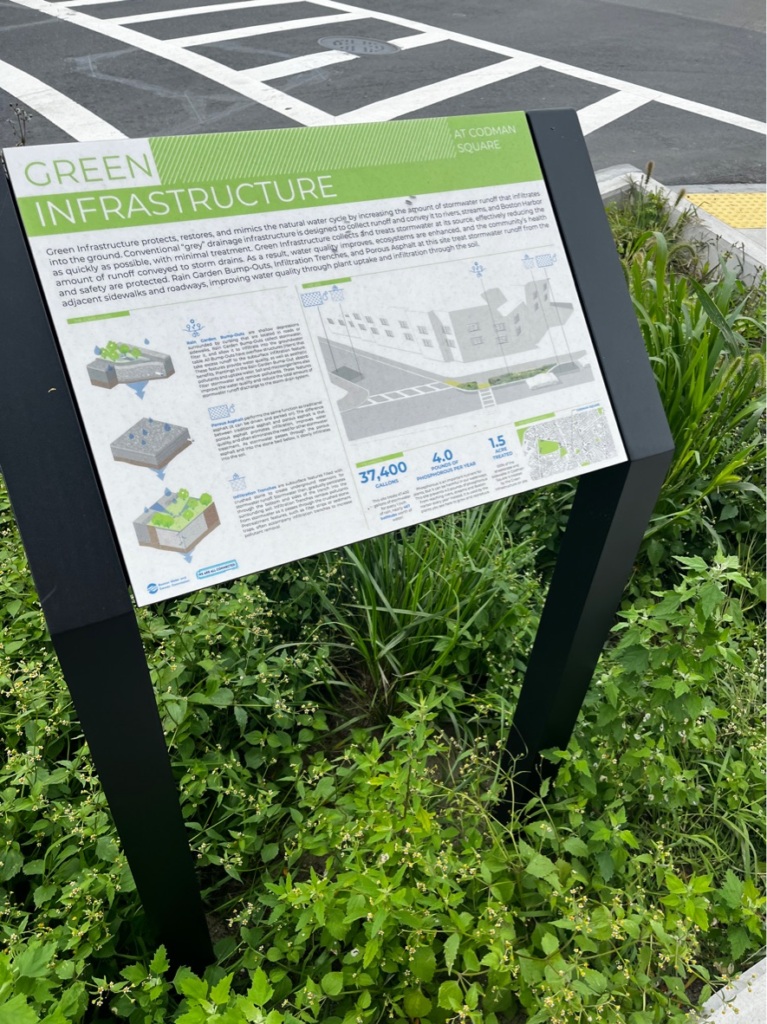
Abigail Ham
Former Policy Associate, Frontier Group
Concrete infrastructure isn't always pleasant to look at, but the environmental cost of demolition is steep. With careful maintenance and integration of nature, we can make it better.
Former Policy Associate, Frontier Group
After four years in a small city in Michigan and 18 years in rural Vermont, I moved to Quincy, a city just south of Boston, in August 2023. In my first few months living there and working in Downtown Boston, I’ve been surprised by many things: Boston accents are surprisingly rare (disappointing), the city is surprisingly navigable via public transportation (delightful), and everything is surprisingly expensive (frustrating).
One of the biggest surprises, however, has been the predominance of impervious surfaces, especially concrete. While other cities in the greater Boston area feature a multitude of historic and aesthetically pleasing structures, in Quincy, sidewalks, walkways, seawalls, plazas, roads, bridges, apartment buildings, office buildings, train platforms, highway ramps … everything the light touches … is concrete. I’m not a fan.
Downtown Boston is home to a couple of concrete brutalist buildings with which the city has a love/hate relationship, but my beef is mostly not with them. It is mostly with other things, like the hulking concrete housing developments and parking garages that you can’t walk anywhere in Quincy without bumping into. In both Quincy and Boston, plazas and other public spaces are paved from corner to corner. In Downtown Boston, office buildings overshadow streets with their bland concrete walls.
Concrete problems
The environmental impacts of concrete are well documented, if not necessarily well known. If the global cement industry was a country, it would be the fourth largest greenhouse gas emitter in the world, surpassed only by China, the United States and India. And the problems don’t end once the concrete is poured. Concrete in a built environment can make heat waves more severe. Like all impervious surfaces, concrete doesn’t absorb or filter runoff, so any pollutants that wash over it can end up in water supplies.

Plantings alongside a busy street in Boston, Mass., add a touch of green to urban life and retain stormwater.Photo by Tony Dutzik | TPIN
Concrete also has direct consequences for human well-being. Part of my walk to work involves passing under a concrete building that looms over a narrow Boston street. It is perpetually dark, always smells of vehicle exhaust, and the blank concrete walls provide nothing of interest to look at. It’s depressing.
Living our lives surrounded by gray concrete isn’t good for us. Studies have shown that proximity to green spaces is associated with better mental health and even suggest that public art may be beneficial for both individuals and communities. Urban green spaces have also been linked to better air quality, higher social cohesion, reduced stress and other benefits.
Given that concrete is awful to look at and bad for our health, the natural tendency is to want to tear it down. But it turns out that’s not such a great idea.
Take concrete buildings, for example. An average demolition creates about 155 pounds of waste per square foot. The Concrete Preservation Alliance estimates that for every 10,000 cubic yards of concrete preserved, we avoid releasing about 5,500 tons of carbon dioxide, conserve 19,000 tons of natural resources, save enough potable water to meet 2,500 people’s daily needs, and keep some 20,000 tons of waste out of landfills.
Of course, there’s a lot that can be done to make new construction more environmentally friendly and livable, from altering the ingredients of cement to designing spaces more thoughtfully. But what about all the concrete that is already part of our built environment, that we don’t want to tear down but also don’t want to live with?
Making the best of it
Getting the longest, best use out of what we already have is an environmental imperative. Both keeping up with routine maintenance and weatherproofing exposed structural elements can extend the useful life of concrete structures.
But that doesn’t have to mean accepting things exactly as they are. We can reduce the environmental impact of older buildings by completing energy efficiency retrofits. And there are many solutions that address both environmental impacts and aesthetics. Rain gardens along concrete sidewalks can help divert pollution from runoff and decrease the risk of flooding while bringing much-needed greenery to urban streets. Similarly, green walls – installations of living plants on the sides of structures – have both human and environmental benefits. They bring additional green space – which can improve mental health and cognition – to urbanites and have the potential to provide food and shelter for essential pollinator species that might otherwise struggle to survive in an urban environment. Additionally, green walls can help reduce the urban heat island effect, and they can be built on several different types of frames, making them potentially adaptable to a variety of building types.
A little imagination goes a long way. Picture housing developments robed in greenery, their sidewalks lined with native plants, the street-level view of downtown office buildings transformed by green walls where urbanites can find a welcome change of scenery, and plazas across the city punctuated by trees that purify the air and provide shade.

An art installation and walking path make a concrete ramp of I-93 in Boston less intimidating.Photo by Tony Dutzik | TPIN
Boston’s City Hall Plaza is a good example. Although it still has a lot of potential to become a more sustainable and livable space, greenery added in 2022 has significantly improved runoff problems and made the area more hospitable.
The concrete question is just one aspect of the bigger question of how to build the world we want. We want a world that is more environmentally friendly and livable, but we don’t get to start with a blank slate. That’s why it’s vital to figure out how to get the best, longest use out of everything we already have – not by tearing it down and starting over but by using our imaginations to make incremental but impactful changes.
Former Policy Associate, Frontier Group
